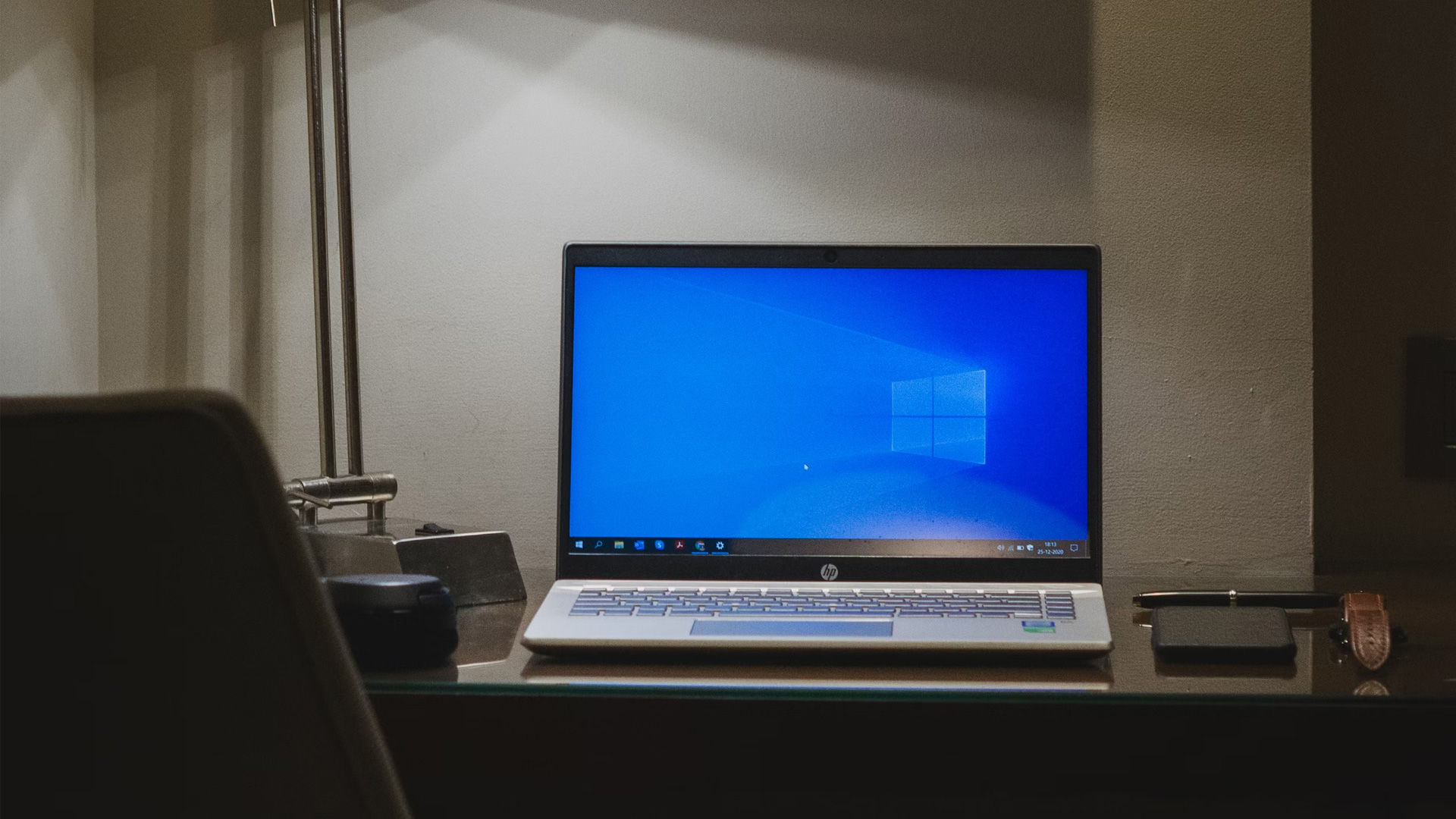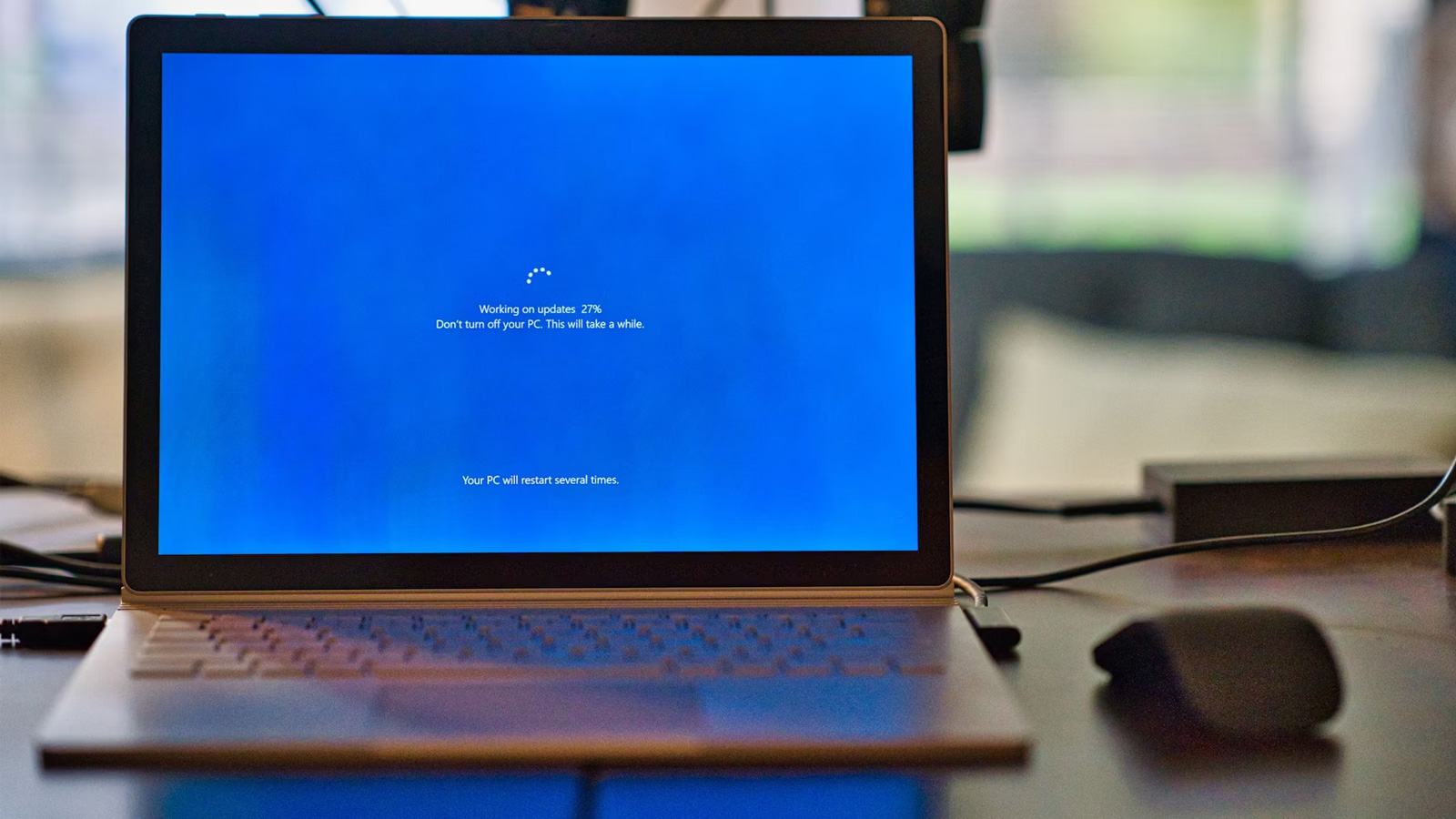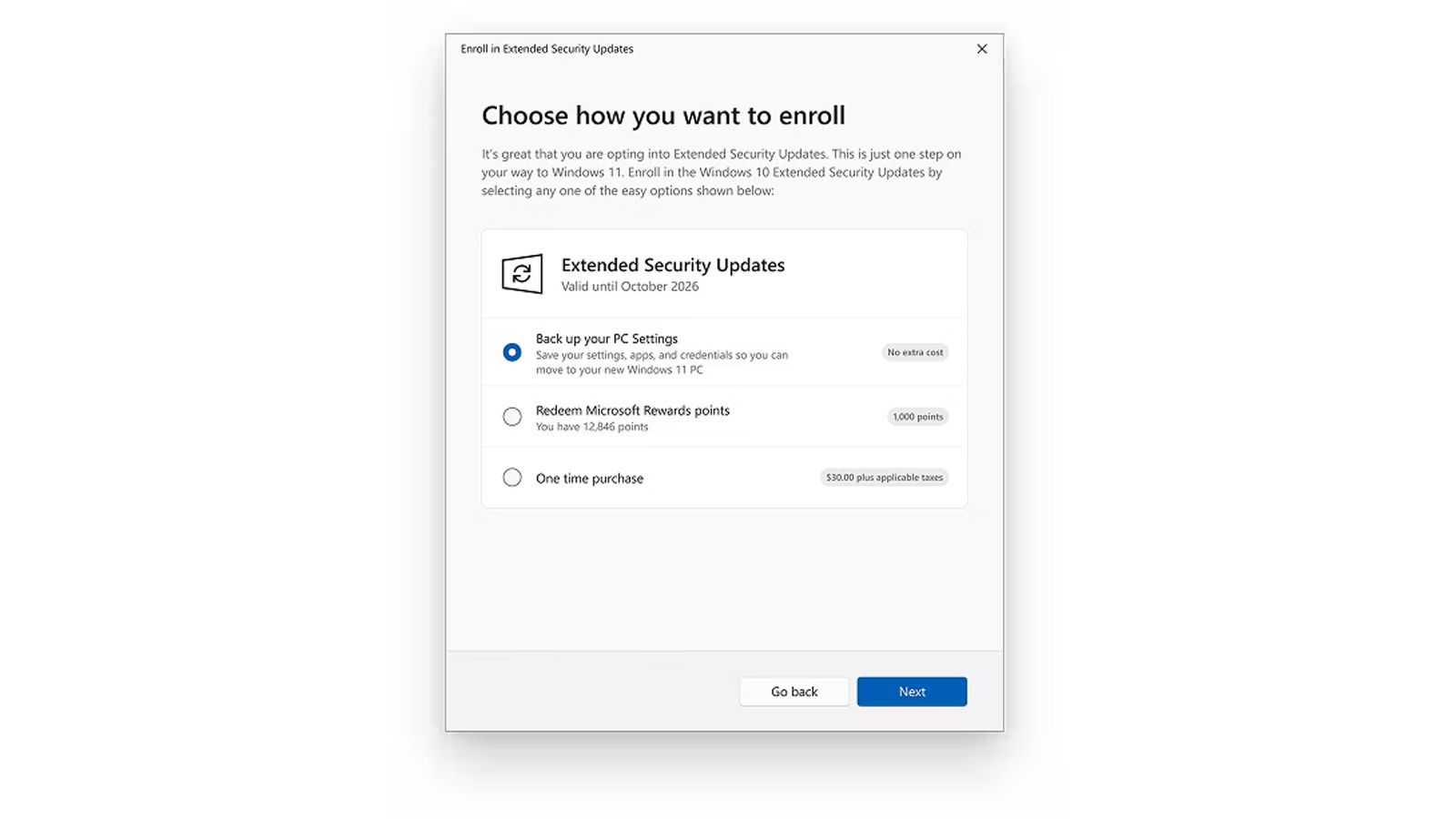Windows 10 support ends today — here's who's affected and what you need to do
Update if you can, upgrade if you can't, or at least get the extended support license.

As of October 14, Windows 10 is no longer supported by Microsoft. That means no more feature updates, no more official troubleshooting support, and most importantly, no more security updates. Any zero-day exploits hackers have been sitting on are almost certainly now out in the wild, and there's not much Microsoft is going to do to stop them.
If you're still running Windows 10, it's really important you take steps to protect yourself as soon as possible. Your operating system is almost certainly far less secure than it was at the start of October 2025.
Windows 10 support is ending: Who is affected?
If you're running Windows 10, you're affected. Windows 10 has officially reached End of Life (EOL) status, so it is no longer supported in almost any way (see below). Whether you have Windows 10 Home, Windows 10 Pro, a commercial or educational license, run a business, or anything else besides. If it's Windows 10, it's done; Your system is not secure.
This doesn't mean Windows 10 will stop working, but without the necessary updates to prevent hackers and bugs from breaking things, the operating system will be exceedingly vulnerable. Hackers and malware authors often sit on potential bugs and hacks so that they can be utilized at the most opportune time. The end of support for a piece of an operating system is a perfect opportunity.
The real kicker? If something goes wrong (or you suffer a malware attack), there's no one at the end of an official support line who can help you, as Microsoft is canning Windows 10 troubleshooting support too.
Windows 10 support is ending: Why is Windows 10 losing support?
This happens to every version of Windows eventually, and it's just Windows 10's time. It was released in 2015, so it has had a 10-year run, which is roughly comparable to other standout Microsoft operating systems like Windows 7. There are only so many years Microsoft is willing to provide support for older systems, and it has commercial reasons to encourage users to move to newer platforms, too.
Microsoft announced the impending end of Windows 10's support in October 2024, giving everyone a year's head start on their update or upgrade. If you haven't managed it yet, it really is something you want to consider doing as soon as possible.
Get Tom's Hardware's best news and in-depth reviews, straight to your inbox.
How to secure Windows 10: Buy a new system
If you aren't looking to spend anything, we totally understand: skip to the sections below. But if you want the quickest and easiest way to stay safe, upgrade to new hardware with Windows 11 by buying one of the best laptops or best gaming PCs out there. What you do with the Windows 10 system after that is up to you, but it's easy enough to transfer all your important data over to the new system if you wish. Otherwise, all the alternative ways to secure it below are equally relevant.
It's a trite statement, but if you've been waiting for a good reason to upgrade, now really isn't a bad time. The latest CPUs and GPUs have matured, and we're still a long way off from next-generation releases like Zen 6 or Nova Lake.

Update your Windows 10 PC
If your PC or laptop is perfectly good and meets the system requirements for Windows 11, then you can simply update it to the newer operating system and save yourself from any security woes.
You can update to Windows 11 from within Windows 10 using the update tool. Here's how.
Alternatively, you can download the installation files and install them over your existing operating system, or on a brand new drive partition if you want to start from scratch.
Note: You can also update to Windows 11 even if you don't meet the hardware requirements. Microsoft doesn't guarantee compatibility, updates, or support in the same manner as Windows 11 on compatible PCs, as there may be some that require certain hardware themselves. It does remain an option, though, and one that's likely preferable to remaining on Windows 10.
Get Extended Security Updates
For those unable to upgrade or update but who want to continue using Windows 10, Microsoft does have its Consumer Extended Security Update (ESU) programme. This is a scheme that will give up to a year of additional security updates (though not feature updates or official troubleshooting support), culminating on October 13, 2026, no matter when you take it out. (So the sooner the better)
To take advantage of the ESU scheme, you'll need a Windows 10 system running version 22H2, Home, Professional, Pro Education, or Workstations edition. Commercial Windows 10 installations are subject to a different ESU programme. You'll also need to have all the latest Windows updates installed and use an adult Microsoft account to sign in as an administrator.
There are three ways to join the ESU programme:
- Pay a one-time $30 purchase fee.
- Redeem 1,000 Microsoft Rewards points.
- For free, if:
- You are located in the European Economic Area and log in to a Microsoft account.
- Log in to a Microsoft account and use Windows Backup to sync your files.
You can enroll in the ESU at any time throughout the next year, but it will still end for consumers on October 13, 2026. Also, you will remain vulnerable when running Windows 10 anytime before you join the ESU.
To join the ESU, on your Windows 10 system, navigate to Settings > Update and Security > Windows Update. As long as your device meets the prerequisites for the scheme, you'll see a link there to enroll. Select it.
You'll be prompted on how you want to enroll, whether that's paying the fee, backing up, or signing into a Microsoft account. Select your preferred option and follow the on-screen instructions.
The ESU can be used across 10 devices once you've joined it. On any additional devices you want to use it on, navigate to Settings > Update & Security > Windows Update and select Enroll Now on those additional devices.

Air gap your system
The final option to secure your Windows 10 system is just to make it so that it can't be attacked or infected. That means air gapping it, or creating a physical barrier between it and any wider networks. You take it off your local network, take it off the internet, and never reconnect it without upgrading it first.
As long as you keep a system air gapped, it doesn't really matter how old or out of date it is. It's (almost) physically impossible to affect any system protected this way. Just remember that it will also severely reduce the capabilities of that system outside its own immediate local processing and rendering.

Follow Tom's Hardware on Google News, or add us as a preferred source, to get our latest news, analysis, & reviews in your feeds.

Jon Martindale is a contributing writer for Tom's Hardware. For the past 20 years, he's been writing about PC components, emerging technologies, and the latest software advances. His deep and broad journalistic experience gives him unique insights into the most exciting technology trends of today and tomorrow.
-
cyrusfox Or how about one ignores all prompts and switch off the Windows ecosystem as 10 becomes unbearably naggy or too compromised. How many times have I already rejected the forced migration to Windows 11?Reply
$30 for peace of mind... for a single year or selling yourself as a fee?
Windows 7 ESU was 3 years, Windows 11 is still a significant OS downgrade in term of user experience. Will Windows 12 follow the pattern of return to form only after releasing a poorly received OS?
Xp Well regarded
Vista Negative reception
7 Well regarded
8/8.1 Negative reception (Forced Touch UI/Windows phone mess)
10 Well regarded
11 Mixed (destroyed the UI, forced AI garbage, advertized as one OS forever)I have a 13 year old macbook air, while it is hard to find a modern browsers that will still work with the ancient Mac OS its running, but the machine and its OS still works, reliably. Outside the time machine prompts that show up ("1000+ days since last backup") Its a nag free experience that works admirable for the task at hand. If it wasn't for adobe, I would have left the windows ecosystem a lot sooner.
I view this as Microsoft shooting their own feet here and causing them to lose further market share. Windows 11 is much too bloated. Make something lean and give full UI control that replicates the simplicity seen in your competitors and your prior offerings. -
JeffreyP55 Reply
I enrolled for ESU enabling a free one year of security updates.Admin said:Microsoft has now ended its official support for the Windows 10 operating system, making it insecure to run in its standard state. To stop yourself from being at risk of viruses and malware attacks, it's important you update or upgrade as soon as you can.
Windows 10 support ends today — here's who's affected and what you need to do : Read more -
ezst036 There seems to be a trend out there of people going YOLO and re-installing Windows 7 by looking at some of the usage stats. I guess that makes this The Year of the Windows 7 desktop?Reply
If people are going to be forced off of Windows 10, it might as well be to the upgraded version that people enjoyed using with that ad-free experience. I saw one site that regards that as a mistake in the metric, but who knows. One thing is for sure Windows 11 remains highly unpopular.
This is not Microsoft's most welcome move. -
Loadedaxe If you’re still on Windows 10, relax...nothing is going to suddenly break. Your system will continue working just fine. Sure, you won’t be getting feature or security updates anymore, but as long as you’re careful online, not clicking random ads or shady links, you’ll be perfectly fine.Reply
You might eventually lose support for some newer software, but that’s likely years down the road. And yes, Windows Defender will continue receiving updates.
Also, don’t rush out to buy a new PC just because of the hype. Retailers are going to take full advantage of the panic and mark up prices to “cash in” on the Windows 10 end of support scare. Wait it out...the deals will be much better once the dust settles.
And if you’re tired of Microsoft’s constant nagging about upgrading, just turn off notifications so you’re not bombarded with popups every time you boot up. -
JeffreyP55 Reply
I built two Windows 11 AM4 and AM5 machines. I made an NVMe 2280 with Ubutu installed. After 30+ years of trying to embrace at least one Linux distro. Still, to this date I can not find a purpose to jump ship ti Linux. My old 4790k, 1080ti still runs great since built, albeit an older GPU after 11 years. So..... one more year of the old goat 10 it is. I also loved Windows 7. However that is a bridge too far.ezst036 said:There seems to be a trend out there of people going YOLO and re-installing Windows 7 by looking at some of the usage stats. I guess that makes this The Year of the Windows 7 desktop?
If people are going to be forced off of Windows 10, it might as well be to the upgraded version that people enjoyed using with that ad-free experience. I saw one site that regards that as a mistake in the metric, but who knows. One thing is for sure Windows 11 remains highly unpopular.
This is not Microsoft's most welcome move. -
Loadedaxe Reply
In all fairness, Windows 10 had a solid 10 year run of support.....that’s a full decade. You really can’t expect Microsoft to keep it going forever, no other company does. Even Apple drops support for older macOS versions at the 10 year mark.cyrusfox said:Or how about one ignores all prompts and switch off the Windows ecosystem as 10 becomes unbearably naggy or too compromised. How many times have I already rejected the forced migration to Windows 11?
$30 for peace of mind... for a single year or selling yourself as a fee?
Windows 7 ESU was 3 years, Windows 11 is still a significant OS downgrade in term of user experience. Will Windows 12 follow the pattern of return to form only after releasing a poorly received OS?
Xp Well regarded
Vista Negative reception
7 Well regarded
8/8.1 Negative reception (Forced Touch UI/Windows phone mess)
10 Well regarded
11 Mixed (destroyed the UI, forced AI garbage, advertized as one OS forever)I have a 13 year old macbook air, while it is hard to find a modern browsers that will still work with the ancient Mac OS its running, but the machine and its OS still works, reliably. Outside the time machine prompts that show up ("1000+ days since last backup") Its a nag free experience that works admirable for the task at hand. If it wasn't for adobe, I would have left the windows ecosystem a lot sooner.
I view this as Microsoft shooting their own feet here and causing them to lose further market share. Windows 11 is much too bloated. Make something lean and give full UI control that replicates the simplicity seen in your competitors and your prior offerings.
I don’t have an issue with Microsoft ending support for Windows 10, that’s fair. What I do have a problem with is forcing people to buy new hardware just to run Windows 11. I completely understand not supporting 20 year-old machines, but systems from 2015 onward are still more than capable and should be supported.
And don’t even get me started on the data mining aspect...that’s a whole other discussion on its own. -
Art Slartibartfast Watch out with using Windows backup just to get your free license extension. Microsoft is rolling out facial recognition software on images stored on OneDrive.Reply -
ezst036 Reply
You bring up really good and important points.JeffreyP55 said:I built two Windows 11 AM4 and AM5 machines. I made an NVMe 2280 with Ubutu installed. After 30+ years of trying to embrace at least one Linux distro. Still, to this date I can not find a purpose to jump ship ti Linux. My old 4790k, 1080ti still runs great since built, albeit an older GPU after 11 years. So..... one more year of the old goat 10 it is. I also loved Windows 7. However that is a bridge too far.
The old boiling frog mode - This is Microsoft's gambit and MS is certainly validated in taking that path to the extent that it is known to be successful.
Had Microsoft done all things at once - that is, start splashing advertisements everywhere, getting rid of local accounts so you're forced to register the combination of your user ID with your machine ID to get the most bang for Microsoft's buck out of your data as Jeff is turned into the product, combined with other moves they are making to consolidate the ad-revenue-generation monetary stream, and in many cases outright forcing people to buy whole new machines, Microsoft would have spooked everybody. A large percent of the frogs would've hopped out of the pot because of the immediate heat. Taken together the whole thing is in fact a huge scandal.
By only turning up the heat a little bit, then a little more, then a little more, many frogs are sitting right there in the pot boiling away. In pieces, the scandal is now a decade or more years old and people can relax a bit about it. The water's only 400 degrees. But, even then, some frogs would still have stayed anyways. Microsoft has serious momentum to do this what they have done.
Now the question is actually this:
ezst036 why are you bringing up old stuff?
I was cursed at birth with a long memory. :sick: Microsoft has successfully transformed fully the Windows OS (11) into a form of malware - to be specific, Windows 11 is advertisementware (adware). That is what it is in a fully honest statement. It is advertisementware. To me this is an event even though the process required over a decade for the path to be fully completed; it was not an event. And Microsoft still has other things they can do in this regard to strengthen their position for stealing people's data and selling it.
I for one would love to see who Microsoft sells this data to, just so MS can make a buck, if hackers could ever root out that information from MS and leak it. Who are the buyers of MS's illicitly mined data? Amazon? Temu? -
Heat_Fan89 Reply
Exactly! You won't get that level of support from Apple and their operating system. You get two of security updates from Apple after they release its successor and on a rare occasion, one might get a security flaw if the exploit is severe.Loadedaxe said:In all fairness, Windows 10 had a solid 10 year run of support.....that’s a full decade.
If someone is using their Windows PC for the basics, they might try installing Ubuntu. Linux has come a long way from it's fringe start where it is easy to install and operate without any support.